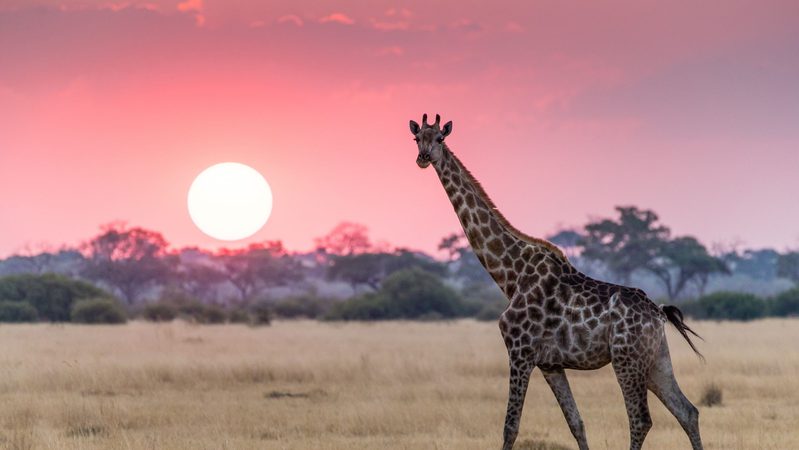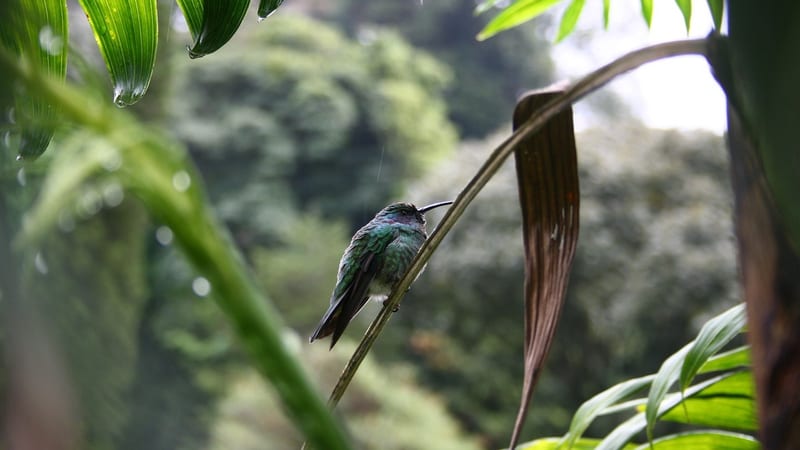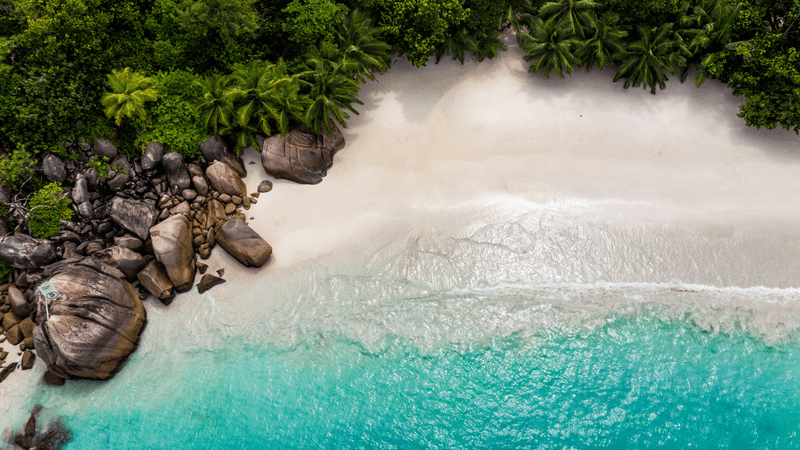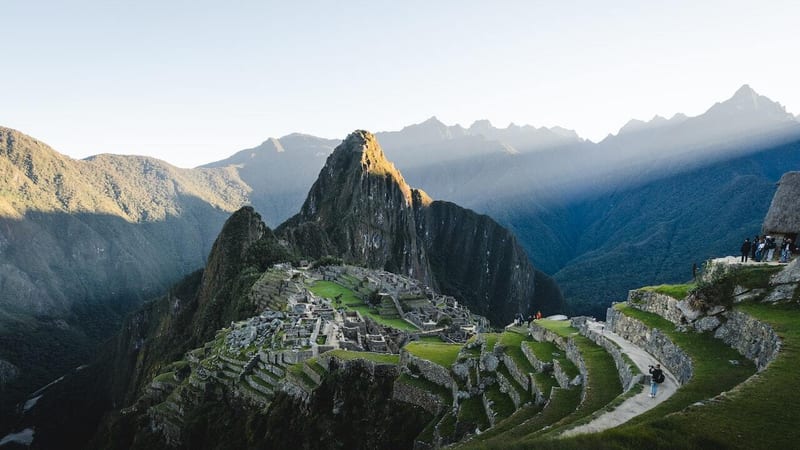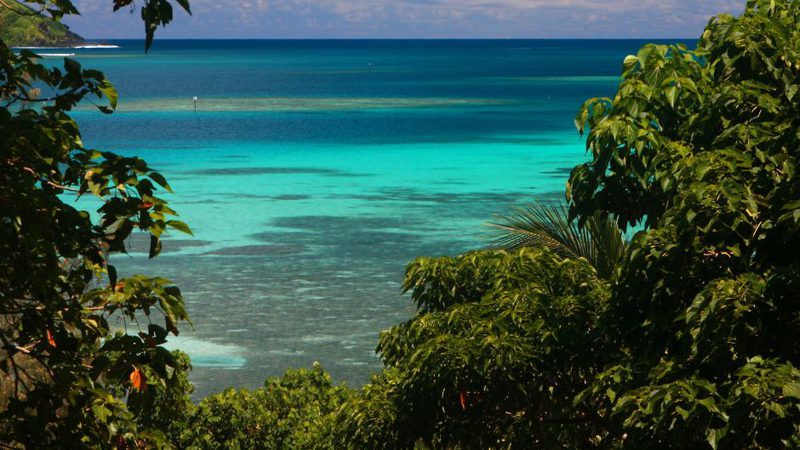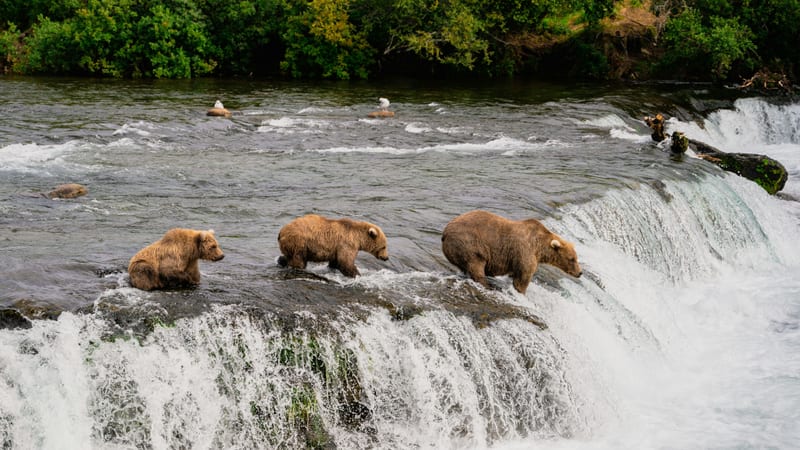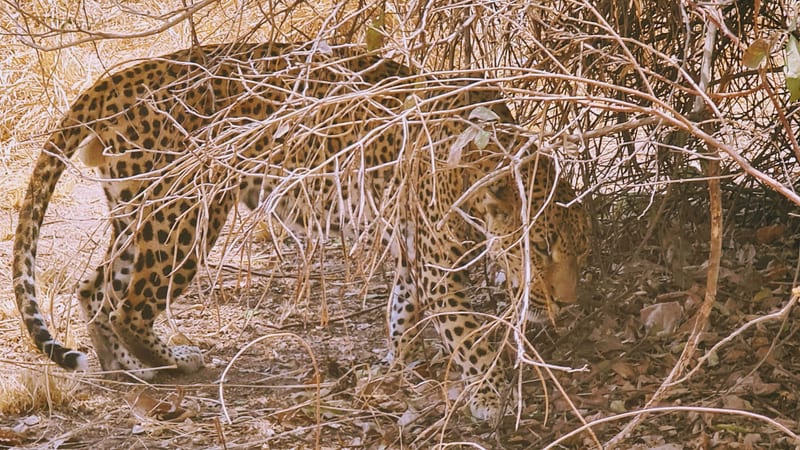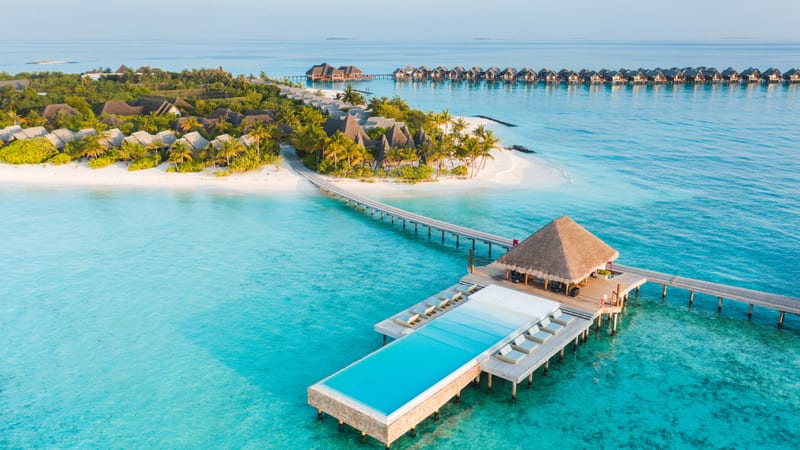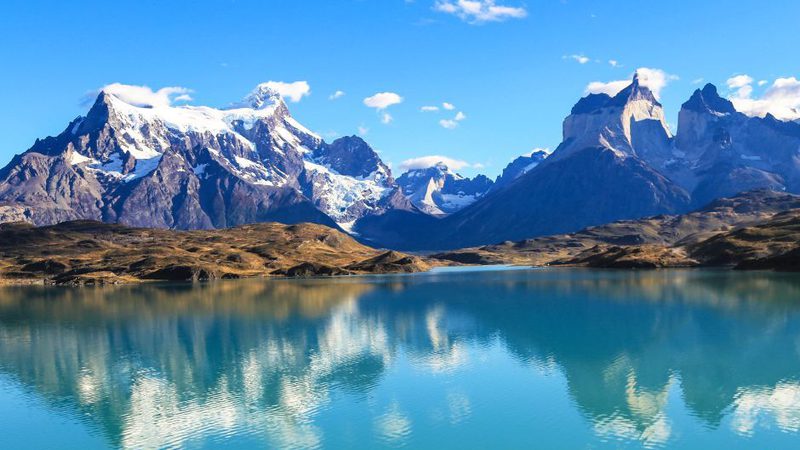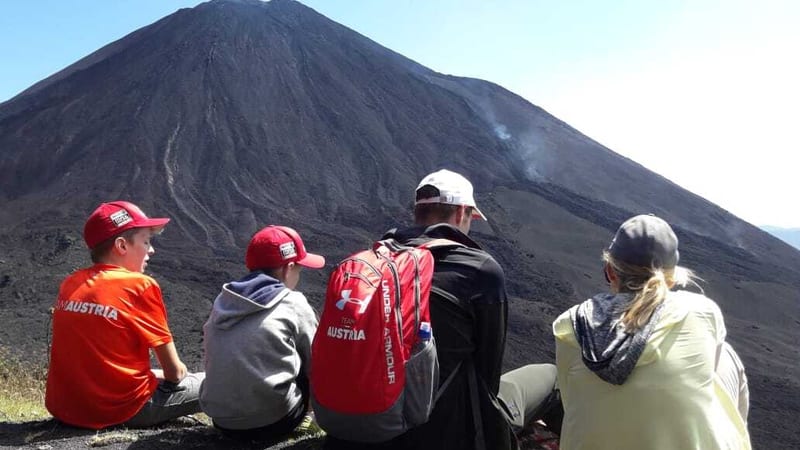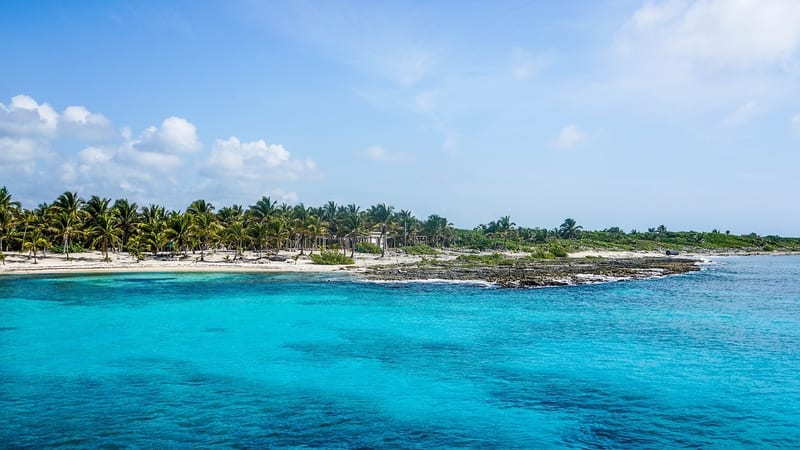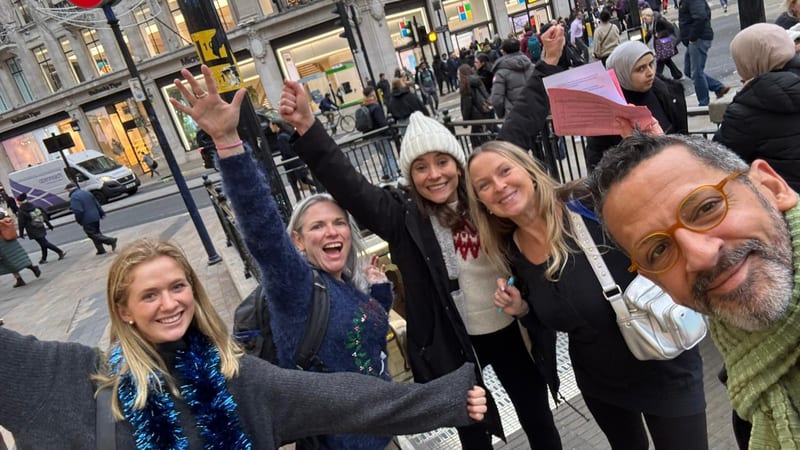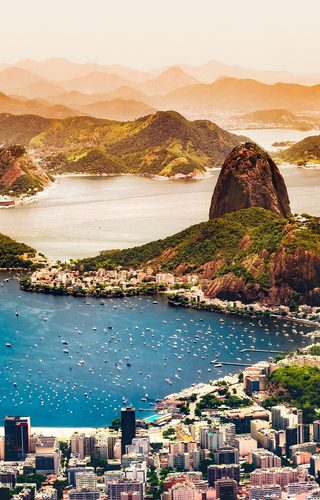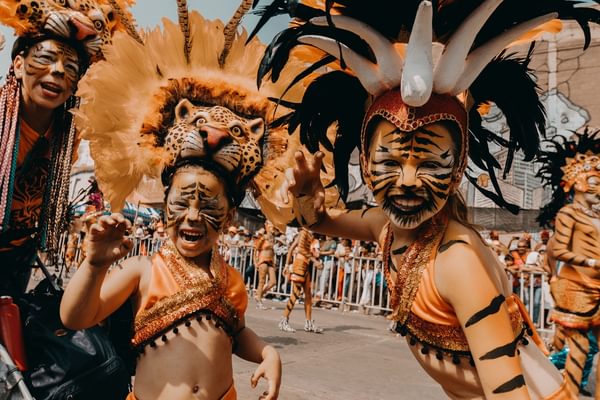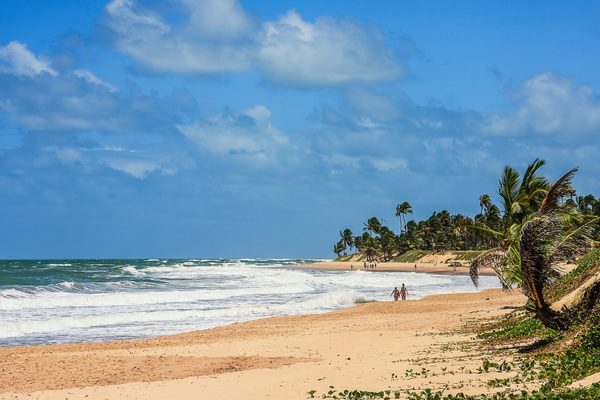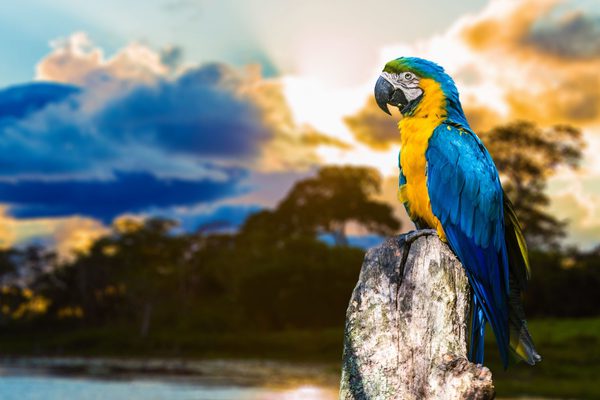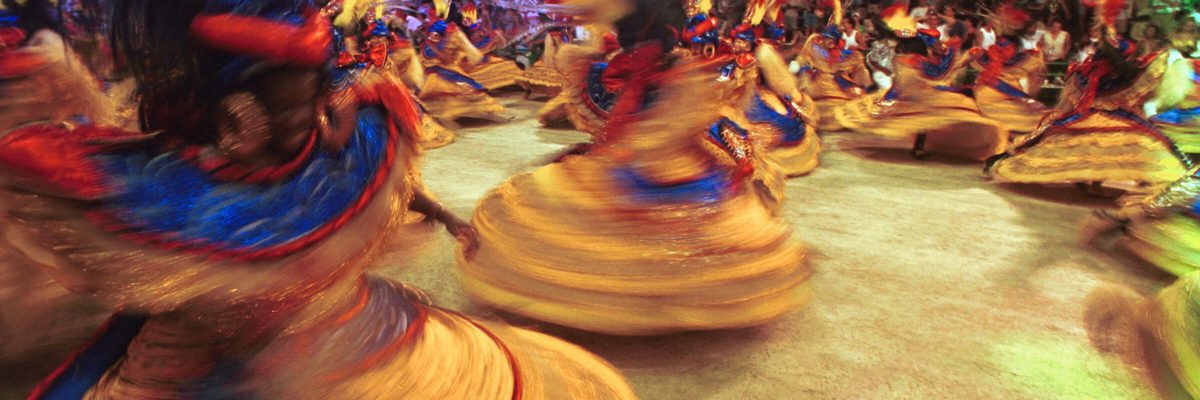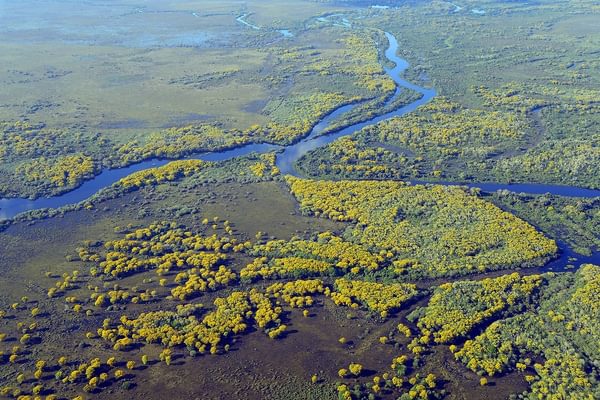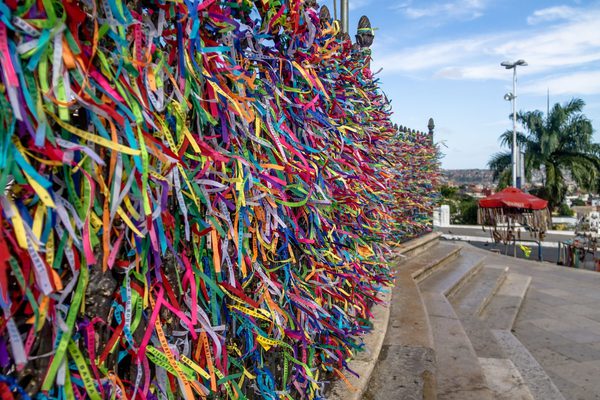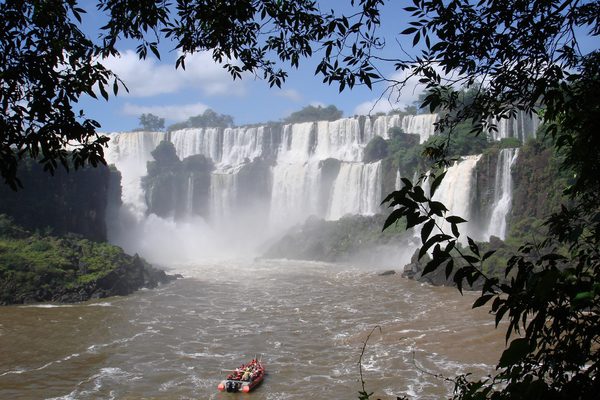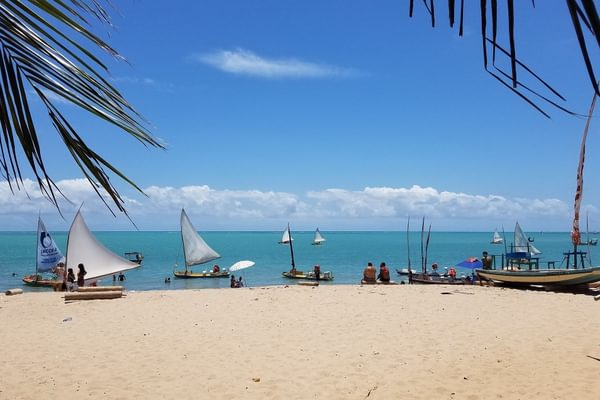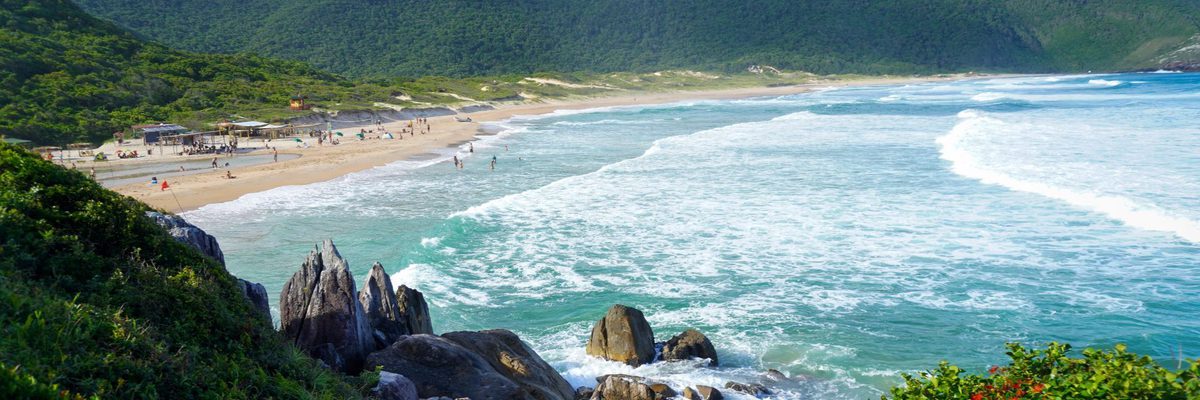Amazon Rainforest, Pantanal Wetlands, Iguazu Falls & Stunning Beaches
Famed for its colourful carnivals, lush rainforest, tropical beaches and love of football, Brazil is as diverse as it is vast.
Brazil's buzzing cultural centre, Rio de Janeiro, is home to the iconic Christ the Redeemer statue overlooking the city which is fringed by the sea, and it is here, that you can samba the night away or watch the famous floats at the Rio de Janeiro Carnival, but leave the city, and you'll find yourself a world away where nature flourishes.
When it comes to wildlife, Brazil has a pretty big claim - it is home to 50% of the Amazon Rainforest which accounts for 10% of species in the world and is a must for anyone visiting Brazil. Float down the unspoiled waters of the Amazon basin keeping an eye out for sloths and pink river dolphins or take a trek through this dense, lush forest. Further south in the Pantanal region, dive in the crystal-clear Olho d'Água River in Bonito to discover an underwater world or take a safari expedition trip to spot jaguars in their natural habitat. A Brazilian Pantanal safari is one of the best options in the world to see these majestic creatures.
Marvel at the vast sheet of water that is Iguazu Falls which straddles Brazil and Argentina and has been named an official Wonder of Nature or relax on the infamous Rio beaches of Ipanema and Copacabana.
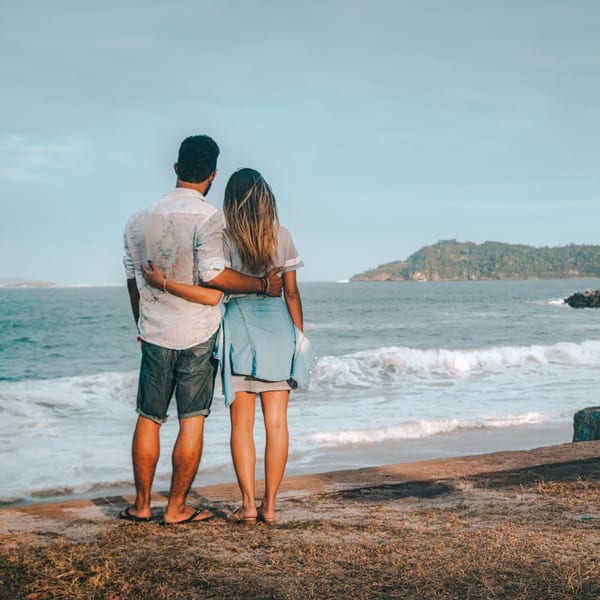
Brazil Amazon & Beach Adventure Honeymoon
- Manaus
- Amazon Rainforest
- Rio de Janeiro
- Buzios
Journey together from the lush Amazon to the beautiful beaches of Rio de Janeiro
Brazil Holidays Trip Inspiration

Our Brazil specialist, Amanda, says:
"Brazil always takes me by surprise, no matter how many times I visit. What I love is how each region feels like a different world, yet it’s all connected by the warmth of the people. Explore the rainforest, and take a boat trip to watch for pink river dolphins, join a vibrant street party or seek out jaguars in the Pantanal. From markets buzzing with samba or street food for the taste of something new... it’s these small, unexpected moments that stay with you long after you’ve left."
When to go to Brazil
Discover the best time to visit Brazil with our helpful guide.
- Best
- Good
- Mixed
- Jan
- Feb
- Mar
- Apr
- May
- Jun
- Jul
- Aug
- Sep
- Oct
- Nov
- Dec
January
January is a fantastic month to visit Brazil as it marks the peak of the summer season. The weather is hot and sunny, perfect for enjoying the stunning beaches and vibrant coastal cities like Rio de Janeiro and Salvador. It is also a great time to experience the famous Carnival, with its colourful parades, lively music, and exuberant street parties.
February
February is still a popular month to visit Brazil due to the continuation of the summer season. The weather remains warm, and you can indulge in various outdoor activities such as hiking, surfing, and exploring the Amazon rainforest. Additionally, February offers the opportunity to witness smaller-scale Carnival celebrations in different regions of the country, showcasing unique local traditions and customs.
March
March signals the end of summer in Brazil, but the pleasant weather lingers, making it an ideal time to explore the country. The temperatures start to cool down slightly, making it more comfortable for outdoor adventures. March also brings festivals like Lollapalooza Brazil, attracting music enthusiasts from around the world. It's a great month to visit popular destinations like São Paulo, Brasília, and the stunning Iguazu Falls.
April
April in Brazil offers a delightful transition between summer and autumn. The weather remains pleasant, with mild temperatures and lower humidity, making it an excellent time for outdoor exploration. It's an ideal month to visit the Pantanal wetlands, where you can observe diverse wildlife, including jaguars and caimans. April also marks the beginning of the surfing season in northeastern Brazil, with destinations like Florianopolis and Itacaré attracting surfers from around the globe.
May
In May, Brazil experiences autumn, bringing cooler weather and a decrease in tourist numbers. This creates an ideal opportunity to discover vibrant cities like São Paulo and Rio de Janeiro without overwhelming crowds. It is also a fantastic month for ecotourism, with options such as exploring the breathtaking Chapada Diamantina National Park or embarking on a river cruise along the Amazon. These adventures allow visitors to immerse themselves in the lush landscapes and experience the country's incredible biodiversity. May in Brazil offers a perfect blend of milder temperatures, serene environments, and remarkable natural wonders.
June
June in Brazil is a month filled with festivities and cultural celebrations. The most prominent event is the Festa Junina, a traditional festival that honours Saint John. During this time, you can immerse yourself in lively street parties, traditional dances, and delicious local delicacies. June is also an excellent month for nature enthusiasts to visit the Pantanal, as the dry season begins, making wildlife sightings more abundant.
July
In July, Brazil reaches the peak of winter, providing a pleasant climate across the country. This makes it an ideal month for exploring the historic towns of Minas Gerais, known for their charming colonial architecture and vibrant cultural heritage. Additionally, July is a fantastic time to visit the stunning beaches of Northeast Brazil, including popular destinations like Jericoacoara and Fernando de Noronha. Here, you can bask in warm waters, soak up the sun, and be captivated by the breathtaking landscapes that these coastal paradises have to offer.
August
August is an ideal month to explore popular tourist spots in Brazil, as the weather is mild and the crowds are smaller. Cities like Salvador and Recife are known for their lively music scenes and vibrant Afro-Brazilian culture, offering numerous chances to indulge in local rhythms. Additionally, this month provides a fantastic opportunity to discover the breathtaking wonders of the Amazon rainforest. The comfortable weather during August allows for enjoyable trekking and wildlife observation, creating an unforgettable experience in the heart of nature.
September
September welcomes the arrival of spring, transforming the country with blooming flowers and rejuvenated landscapes. As the weather becomes warmer, it's the perfect time to visit the stunning beaches of Rio de Janeiro and Florianopolis, where you can soak up the sun, surf the waves, and embrace the vibrant coastal culture.
October
October in Brazil brings pleasant temperatures and a decrease in tourist crowds, making it an ideal month for outdoor activities. One must-visit destination during this time is the iconic Iguazu Falls, a UNESCO World Heritage site. The water levels are typically high, allowing visitors to witness the falls in their full splendour, with the thundering cascades creating a breathtaking spectacle.
November
As November arrives in Brazil, it brings the beginning of summer, with rising temperatures and ample sunshine. This makes it an excellent time to visit the renowned beaches of Brazil. Whether you're looking to indulge in exciting water sports, sunbathe on golden sands, or simply unwind amidst the coastal beauty, these beach destinations offer an idyllic retreat.
December
Moreover, December presents excellent opportunities for diving and snorkelling in the crystal-clear waters of Fernando de Noronha, an archipelago renowned for its stunning marine life and pristine beaches. Alternatively, nature lovers can explore the landscapes of the Pantanal, a vast wetland ecosystem teeming with diverse wildlife, before the onset of the rainy season.
Types of Brazil Holidays vacations
Where to go in Brazil
Best places to stay in Brazil
FAQs About Your Brazil Holidays Holiday
Planning a holiday to Brazil Holidays? Our experts share advice on everything from what to pack, when to go, to tips for families, covering the questions we get asked the most.
Can I encounter wildlife in Brazil?
Absolutely. Brazil’s wildlife is extraordinary. From jaguar spotting in the Pantanal (best between June and October for visibility) to exploring the vast Amazon Rainforest and the lush Atlantic Rainforest, each region offers something unique. You can snorkel among sea turtles and dolphins in the protected waters of Fernando de Noronha, or enjoy seasonal birding and guided walks from beautiful eco-lodges. These encounters are as diverse as they are unforgettable.
How long should I spend in Brazil?
We recommend two to three weeks for a truly immersive experience. That allows you to take in Rio de Janeiro’s glamour, wander through Salvador’s colonial charm, explore the wetlands of the Pantanal, and unwind on pristine northern beaches, without ever feeling rushed.
What makes Brazil a luxury travel destination?
Brazil combines dramatic natural beauty with world-class accommodation and service. From five-star resorts overlooking Iguacu Falls like Hotel das Cataratas, a Belmond Hotel, to exclusive eco-lodges in the Amazon and stylish hotels in Rio de Janeiro, you’ll find settings that pair breathtaking views with comfort, privacy, and tailored experiences.
What makes Brazil’s beaches unique for tourists?
Brazil’s coastline offers incredible diversity: lively city beaches with iconic culture, remote islands with untouched natural beauty, and hidden gems where rainforest meets turquoise water. Coupled with warm hospitality, fresh seafood, and breathtaking scenery, every beach promises a distinctive experience.
When is the best time to visit Brazil?
Timing depends a lot on which regions you plan to visit. For beach and coastal areas, peak holiday seasons (like December to March) are the hottest and most crowded. For wildlife in Amazon or Pantanal, the dry season (roughly June to November) tends to offer more comfortable conditions and better opportunities to spot wildlife. Outside peak times, you’ll often have better value, fewer crowds, and still great experiences.
Is Brazil suitable for first-time wildlife-seeking tourists?
Yes. Even if it’s your first wildlife vacation, well-organized tours, expert guides, and high-standard lodges make it accessible and rewarding. Every detail is handled, allowing you to focus on spotting incredible animals and enjoying natural beauty without any stress.
Do US tourists need a visa to visit Brazil?
The majority of countries we offer require visas to visit, please give our team of experts a call on 0203 111 1315 to chat through a specific country requirement as these do change over time. Visas can sometimes be purchased on arrival but often you are required to get one prior to travel. We recommend visiting the UK Foreign, Commonwealth & Development Office (FCDO) website or the relevant embassy for up-to-date information on visas, entry rules, and travel advice as soon as you have booked your trip.
What activities are available for wildlife enthusiasts in Brazil?
From guided hikes and boat safaris to horseback riding, birdwatching, photography, and snorkeling or diving in Fernando de Noronha, Brazil offers a wide range of immersive experiences. You can encounter wildlife up close while learning about conservation efforts and the ecosystems you visit.
Where are the best places to see wildlife in Brazil?
Brazil’s wildlife is incredibly diverse. The Amazon Rainforest is a biodiversity hotspot with macaws, river dolphins, and monkeys. The Pantanal wetlands offer some of the world’s best jaguar-spotting safaris, while the Atlantic Forest is home to rare primates and endemic bird species. For marine life, Fernando de Noronha’s protected waters host sea turtles, dolphins, and vibrant coral reefs.
Which beaches in Brazil are best for a mix of activity and relaxation?
Rio de Janeiro’s Copacabana and Ipanema offer vibrant beach culture, and watersports alongside lively cafés and nightlife. For a quieter escape, Bahia’s Trancoso and Itacaré combine golden sands with lush rainforest, perfect for unwinding while still enjoying outdoor adventures.
Is it safe to walk around Rio de Janeiro?
Your safety is always our top priority and our team are always happy to spend time answering any questions or concerns, just give one of our experts a call on 0203 111 1315. We only sell destinations and experiences that are considered safe for travel at the time of booking. However, situations can change, so we always recommend checking the latest guidance from the UK Foreign, Commonwealth & Development Office (FCDO) before you travel. We also encourage you to follow any local advice while abroad and take out comprehensive travel insurance for peace of mind.
What should I know before visiting the Amazon rainforest?
Visiting the Amazon requires careful planning. It's essential to travel with an experienced guide to navigate the dense jungle safely. Staying in eco-lodges offers a comfortable base for excursions, with activities like canoeing, piranha fishing, and guided forest walks. Health precautions include avoiding tap water and being prepared for high humidity and occasional rain. The best time to visit is the dry season from June to November. Some people also prefer the experience when the region is flooded, lush and green, during the wet season.
How do I travel between regions in Brazil?
Brazil's vast size means that domestic flights are often the most efficient way to cover long distances. Airlines like LATAM, GOL and Azul offer extensive networks connecting major cities and tourist destinations. Within cities, taxis and rideshare services like Uber are widely available and considered safe. It's advisable to book transportation through reputable providers and plan routes in advance.
Are there any health precautions I should take when travelling in Brazil?
We are not medical specialists and would always advise speaking to your GP or a registered travel health clinic at least 8 weeks before you travel to ensure you have accurate advice. Please be aware that even within a country the advice varies from region to region so we strongly suggest speaking to a medical professional.
What are the must-try foods and drinks in Brazil?
Brazil’s cuisine is as vibrant and diverse as its landscapes and tasting your way through the country is one of the real joys of visiting. Start with feijoada, a rich black bean and pork stew often shared with family and friends on Sundays. On the coast, sample moqueca, a fragrant seafood stew from Bahia made with coconut milk, lime, and dendê oil. Street food is a big part of local life too, so try pão de queijo (cheesy cassava bread), coxinhas (crispy chicken croquettes), and pastéis (fried pastries filled with meat or cheese). In the northeast, acarajé, a spicy Afro-Brazilian snack made from black-eyed peas and prawns, is a must. Finish with brigadeiros, Brazil’s beloved chocolate truffles, and a strong caipirinha, the national cocktail, made with lime, sugar, and cachaça.
Speak to a Brazil Holidays expert today
and start planning your tailor-made vacation

Amanda
Brazil Holidays Expert

